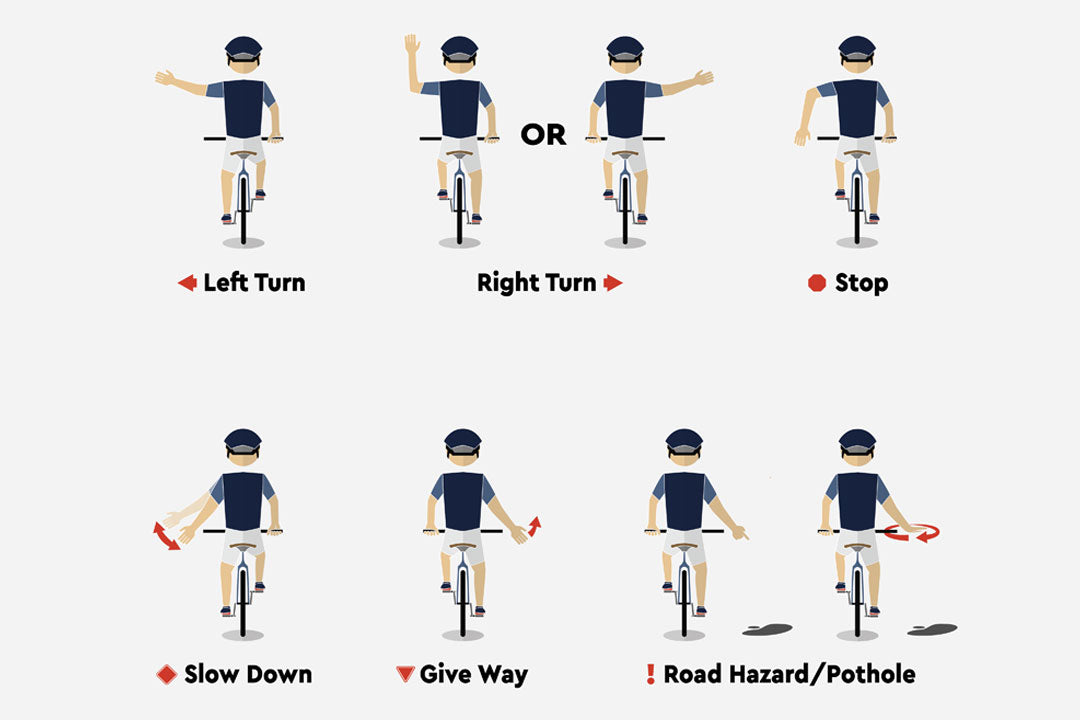Bike hand signals are a great way for cyclists to communicate intentions on the road. If you're not familiar with them, it can seem a little complicated and even overwhelming at first. But there's good news: learning the hand signals for things like turning and stopping isn't difficult – and it'll make cycling much safer.
Bike Hand Signals You Should Know
1. Slow DownHold your left arm behind you so that other cyclists can see your signal clearly. With your palm facing down, move your hand up and down at the wrist letting other motorists know that you’re slowing down. Use this signal when you are certain that you will be applying the brakes to significantly lower your speed.

The “stop” signal is the most commonly used hand signal by cyclists. This signal is important since, unlike cars, most bicycles don't usually have brake lights. Simply stretch your left arm out and bend it down at a 90-degree angle with your hand open to signal that you are coming to a halt or slowing down.

Fully stretch your left arm out to your side to indicate a left turn. Make this signal roughly 100 feet before turning to notify people and to allow you to reposition your hands on your bike as you turn.

A right turn can be signaled in two ways. The simplest, and most common, method is to simply stretch your right arm out to your side, as you would for a left turn on the opposite side.
Some states prohibit this type of signal. Instead, stretch your left arm out to the side and turn it up at a 90-degree angle to signal a right turn. Regardless of the approach you employ, make the signal around 100 feet before turning and keep your arm outstretched for about 3 seconds.

To signal fellow cyclists or other motorists to go ahead, simply fan your hand forward.

When approaching a road hazard, such as a pothole, manhole cover, or drain cover, extend your arm and point to the floor. If possible, this can be accompanied by a circling motion.

Why are bike hand signals important?
Bike hand signals might help you avoid being hit by a car. While there is still a possibility that a car would drive irresponsibly and hit you while you are riding your bike, signaling your intentions can make this less likely.
Learning signals is essential for the safety of other cyclists in addition to motorists. If you're riding in an area where there are a lot of cyclists, utilizing hand signals can alert others to your intention to stop, slow down, or turn, giving them enough time to respond correctly.





2 comments
nice one
I wish more people used the proper signals and drivers understood the signals